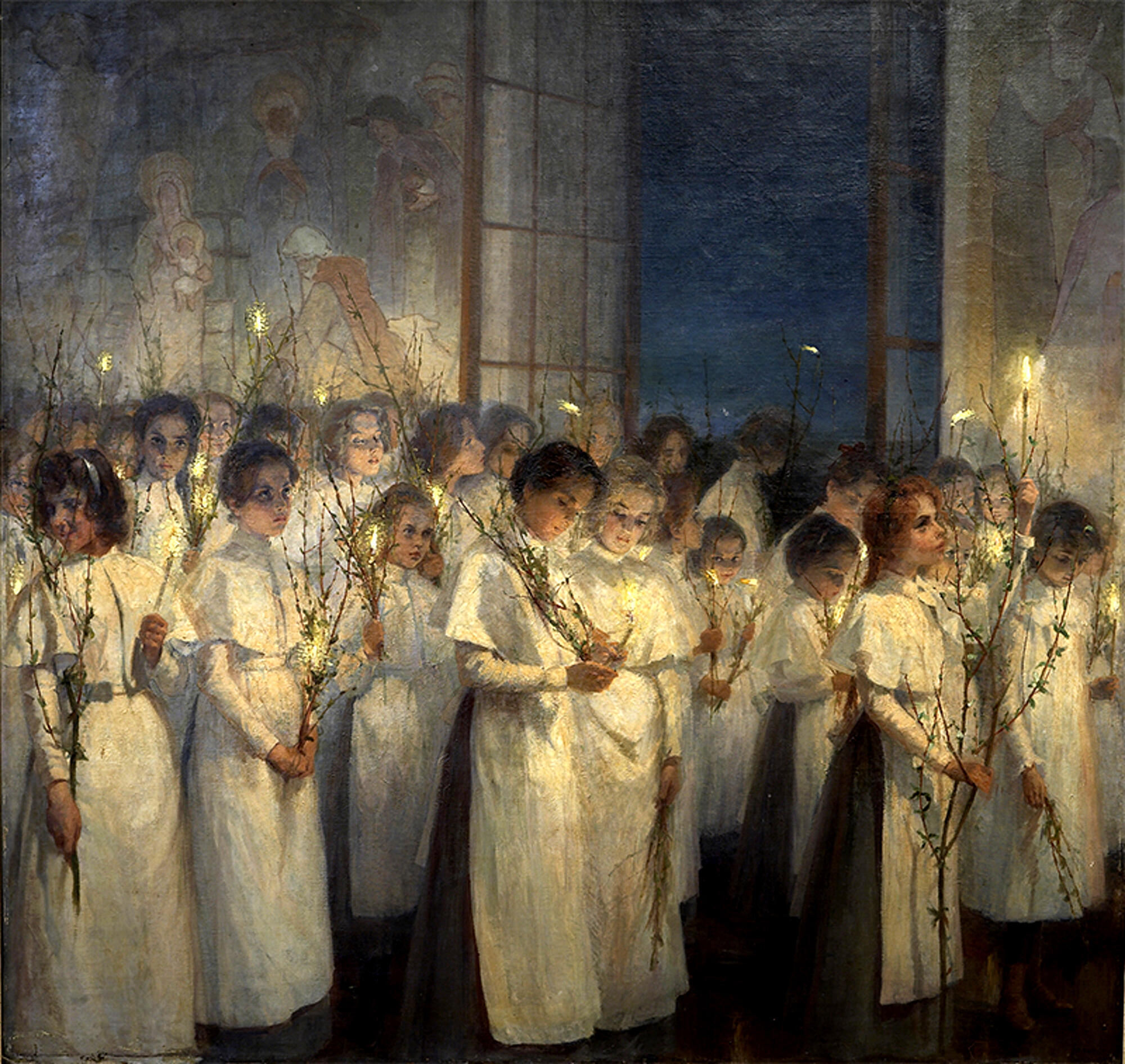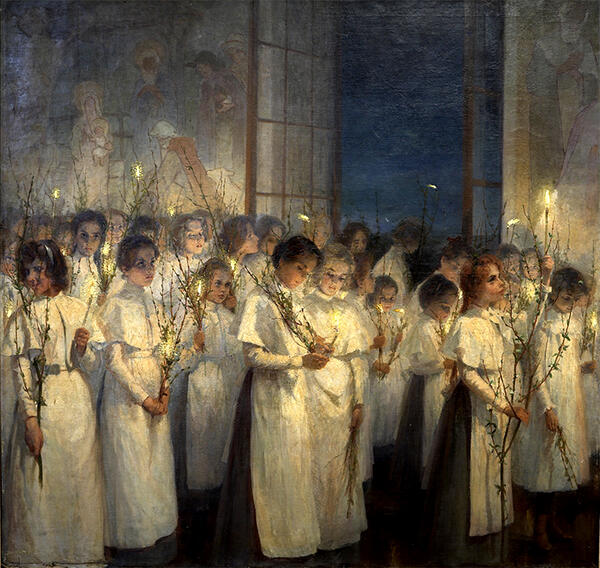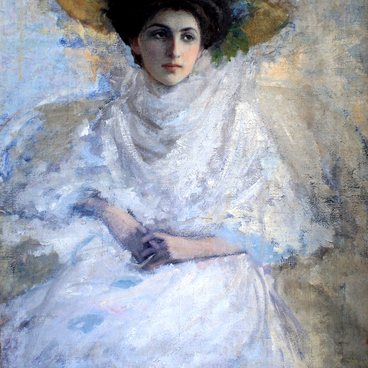The painting ‘Girls. Palm Sunday’ became a key work in the output of Taganrog artist Seraphima Blonskaya (October 3, 1870, Verkhnodneprovsk - August 9, 1947, Taganrog). It was created in 1900 as a graduation work at the Imperial Academy of Arts. Later the same year, the painting was acquired by the Museum of the Academy, and at the request of the City Council three years later, it was sent to Taganrog and became one of the first art exhibits in the city’s newly opened museum.
When selecting a plot for the painting, the artist chose a touching scene of a children’s worship service. Young schoolgirls are depicted in festive uniforms with branches of willow and candles in their hands. For almost a year, the artist collected necessary material for the future painting. She made life drawings, painted studies, and worked on sketches of the future composition. She spent several months in Taganrog and often visited the Taganrog Mariinskaya Gymnasium that she had graduated from. Many of the gymnasium’s young students became models for the images of schoolgirls. This painting is laden with the artist’s personal experiences: it is a scene that the artist witnessed in reality, and it was intertwined with her own memories and reflections on her youth and school years.
The artist deliberately makes girls the main characters of the painting. This is enhanced by both the chosen semi-square format of the canvas, and the overall composition. Despite the large number of the depicted people, the space of the painting does not seem overloaded. The rhythmic arrangement of the figures portrays tranquility, and emphasizes the solemnity of the ceremony. An open window in the background maintains this rhythm and visually enlarges the space of the painting.
The contrast between the dark evening sky and the girls’ white clothes emphasizes the intimacy of the church service, and focuses the viewer’s attention to the foreground. The black and white modeling and the coloring of the painting both contribute to this effect. The golden flame of candles, colourful reflections on the folds of clothes, and the muted tones of the wall paintings create an incredible harmony in the coloristic solution of every detail. The variety of color combinations seems to fill the work with glow, and makes each of the girls' figures the embodiment of inner purity.
When selecting a plot for the painting, the artist chose a touching scene of a children’s worship service. Young schoolgirls are depicted in festive uniforms with branches of willow and candles in their hands. For almost a year, the artist collected necessary material for the future painting. She made life drawings, painted studies, and worked on sketches of the future composition. She spent several months in Taganrog and often visited the Taganrog Mariinskaya Gymnasium that she had graduated from. Many of the gymnasium’s young students became models for the images of schoolgirls. This painting is laden with the artist’s personal experiences: it is a scene that the artist witnessed in reality, and it was intertwined with her own memories and reflections on her youth and school years.
The artist deliberately makes girls the main characters of the painting. This is enhanced by both the chosen semi-square format of the canvas, and the overall composition. Despite the large number of the depicted people, the space of the painting does not seem overloaded. The rhythmic arrangement of the figures portrays tranquility, and emphasizes the solemnity of the ceremony. An open window in the background maintains this rhythm and visually enlarges the space of the painting.
The contrast between the dark evening sky and the girls’ white clothes emphasizes the intimacy of the church service, and focuses the viewer’s attention to the foreground. The black and white modeling and the coloring of the painting both contribute to this effect. The golden flame of candles, colourful reflections on the folds of clothes, and the muted tones of the wall paintings create an incredible harmony in the coloristic solution of every detail. The variety of color combinations seems to fill the work with glow, and makes each of the girls' figures the embodiment of inner purity.



